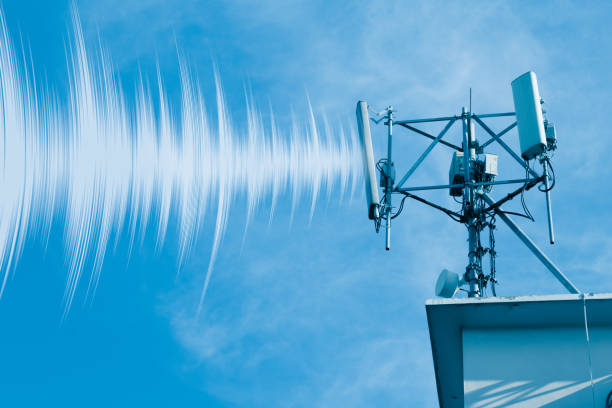
What is ERCS Testing?
ERCS Testing, or Emission Reduction Credit Systems Testing, plays a critical role in managing air quality by reducing emissions during industrial operations. This process is especially significant in the oil and gas industry, where ERCS Testing is used to measure reductions in pollutants emitted by facilities. At White Cloud Communications Inc., we’ve observed firsthand the improvements ERCS Testing brings, reducing harmful emissions and bolstering environmental conservation in sensitive ecosystems.
ERCS Testing ensures that facilities comply with regulatory standards by accurately tracking emission reductions. By validating these reductions, businesses can earn credits, which can be traded or banked for future use. This approach not only incentivizes sustainable practices but also fosters a market-driven mechanism for managing air pollution, which aligns with our commitment to innovation and community well-being.
Benefits of ERCS Testing
Why is ERCS Testing crucial for industries, you might ask? The benefits are multifaceted. Firstly, it promotes environmental stewardship by encouraging facilities to lower their emission levels. Secondly, it creates a financial incentive, allowing businesses to trade their surplus credits. This trading mechanism has proven effective in several states, with facilities reporting improved operational efficiency and reduced environmental impact.
Having worked in wireless communications for over two decades, I recognize the parallel between efficient air quality management and seamless communication systems. Just as our communication solutions connect communities, ERCS Testing connects environmental responsibility with economic viability, demonstrating the importance of integrated systems.
Finally, by participating in ERCS Testing, businesses demonstrate a proactive approach to regulatory compliance. This not only enhances their brand image but also builds trust with stakeholders and the public–a core aspect of our philosophy at White Cloud Communications.
How ERCS Testing Works
- Emission Reduction Identification: Facilities identify potential areas for emission reductions and take appropriate actions.
- Testing and Verification: The reductions are tested and verified through standardized protocols to ensure accuracy and compliance.
- Credit Issuance: Verified reductions are converted into emission reduction credits (ERCs) that can be used or traded.
- Registry and Trading: Credits are registered in official databases, providing a platform for trading with other facilities.
- Continuous Improvement: Facilities continually assess and improve their emission strategies, driving further reductions.
This structured process ensures not only environmental gains but also practical benefits, akin to the meticulous planning we implement in developing top-tier communication solutions.
What is the impact of ERCS Testing on business operations?
ERCS Testing significantly affects operational strategies by necessitating a balance between emission reductions and production goals. Businesses need to integrate sustainable practices without compromising productivity, which can be challenging but rewarding. The compliance with testing standards also requires investment in technology and training, similar to the strategic planning we utilize at White Cloud Communications for deploying advanced wireless networks.
Many companies report increased efficiency as a result of ERCS Testing. Innovations driven by the need to reduce emissions often lead to streamlined operations and cost savings. This mirrors our experience in wireless communication, where advancements lead to enhanced connectivity and customer satisfaction.
The Future of ERCS Testing
Looking ahead, the role of ERCS Testing is poised to expand as industries increasingly prioritize sustainability. Emerging technologies promise to enhance testing accuracy and efficiency, opening new avenues for industrial applications. Our experience at White Cloud Communications underscores the potential for leveraging advanced technological solutions to solve complex challenges.
Continuing innovation in ERCS Testing will likely see increased partnerships between regulatory bodies and industries, fostering a collaborative approach to environmental management. This mirrors the collaborative ethos we champion as we work with clients to develop tailored communication solutions.
- Increased investment in green technologies
- Adoption of comprehensive emission management strategies
- Promotion of cross-industry knowledge sharing
As these trends unfold, businesses that embrace ERCS Testing will not only contribute to a cleaner environment but also drive economic growth and operational excellence.

Why is ERCES Testing Crucial?
Steps Involved in ERCES Testing
- Initial Assessment: Evaluate building plans and materials to identify potential interference points.
- System Installation: Equip the space with the necessary hardware for communication enhancement.
- Signal Testing: Measure and adjust for optimal signal strength throughout the building.
- Compliance Verification: Ensure that all installations meet NFPA and IFC guidelines.
- Final Review: Conduct a comprehensive check to guarantee system integrity and performance.
Each step is crucial for guaranteeing that responders have the reliable communication needed during emergencies.
What Are the Benefits of ERCES Testing?
What Qualifies as a ERCES Testing Emergency?
Insights into ERCES Testing Challenges
Exploring the Future of ERCES Testing
Importance of ERCES Maintenance Testing
Having been in the wireless communication industry for over two decades, I can tell you that ERCES Maintenance Testing is crucial in ensuring the reliability and efficiency of emergency responder communication enhancement systems. These systems are vital for maintaining effective communication during emergencies, particularly in large structures where radio signals might falter. Ensuring these systems are operational can be the difference between a smooth response and chaos.
ERCES Maintenance Testing not only guarantees compliance with regulations but also significantly extends the operational lifespan of the equipment. It’s akin to regular health check-ups for your system, identifying potential issues before they escalate into costly repairs or failures.
How Often Should ERCES Systems Be Tested?
Many clients in southern Idaho frequently ask: How often should ERCES Maintenance Testing be conducted? The answer largely depends on local regulations and specific building requirements. However, from our extensive experience with various industries, annual testing is generally recommended.
This annual process involves rigorous examination of all system components including antennas, amplifiers, and batteries, ensuring each part meets required standards. In regions with high regulatory standards, testing may need to be even more frequent, particularly after any structural building changes or alterations in local radio frequencies.
What Are the Steps in ERCES Maintenance Testing?
Ensuring your ERCES system is functioning optimally involves a structured process:
- Planning: Develop a detailed plan that outlines the testing scope and specifies equipment such as calibrated radios.
- Inspection: Examine antennas, cables, and other components for physical damage or degradation.
- Testing: Measure signal strengths and coverage, using specialized test equipment to verify performance.
- Documentation: Record all findings and any maintenance actions taken, providing a valuable resource for future reference.
- Corrective Actions: Address issues identified during testing promptly, which may include hardware adjustments or replacements.
Addressing Common Concerns in ERCES Maintenance
In my two decades at White Cloud Communications, I’ve encountered several common concerns regarding ERCES Maintenance Testing. Building owners often worry about disruptions during testing. To mitigate this, we conduct tests during off-peak hours and coordinate closely with facility managers to minimize impact.
Another frequent concern is cost. While ERCES Maintenance Testing does involve investment, the cost of neglecting it can be far greater, both in terms of system failure and non-compliance fines. It’s an investment in safety and peace of mind.
What Qualifies as an ERCES Maintenance Testing Emergency?
ERCES Maintenance Testing emergencies often arise from unexpected failures or when critical communication issues are detected. Rapid action is essential in these scenarios to restore full functionality. Regular preventive testing minimizes such emergencies, ensuring systems are always ready for critical moments.
In our experience, some emergency scenarios include failed acceptance tests post-installation or significant shifts in signal coverage due to structural changes. Addressing these swiftly with immediate testing and rectifications is crucial in maintaining system integrity.
- Failed acceptance tests
- Significant building alterations
- Changes in local emergency frequencies

What distinguishes ERCS Testing from other environmental compliance programs?
At White Cloud Communications Inc., one of the frequent questions we encounter is how ERCS Testing stands out amidst various environmental compliance initiatives. ERCS Testing is unique because it quantifies and verifies emission reductions, allowing businesses to earn credits that can be traded, creating a financial incentive for pollution reduction. This system not only motivates companies to decrease emissions but also enables them to participate in a market-based approach to environmental management. It’s particularly beneficial in industries like oil and gas where emissions are a significant concern. By reducing their emissions, companies not only comply with regulations but can also profit from their sustainable practices. Have you considered how participating in such programs can enhance your business’s sustainability profile?
How does ERCS Testing integrate into existing business operations without causing disruptions?
Integrating ERCS Testing into daily operations might seem daunting, but at White Cloud Communications, we believe in a strategic approach to implementation. We advise businesses to start by assessing potential areas for emission reductions that align with their operational goals. By adopting incremental changes and leveraging the latest technologies, companies can ensure compliance without hampering productivity. For instance, implementing energy-efficient processes or modernizing equipment gradually can lead to long-term benefits. The key lies in balancing emission reduction with operational efficiency. Are there specific areas in your operations where you see potential for such improvements?
What are the business benefits of implementing ERCS Testing beyond regulatory compliance?
ERCS Testing offers several advantages that extend far beyond just ticking the regulatory compliance box. At White Cloud Communications, we’ve seen how these programs can transform business operations by fostering innovation and efficiency. Companies report improved resource utilization, which often leads to cost savings, and enhanced brand reputation as they become recognized for their commitment to sustainability. It’s akin to how we approach communication solutions, always striving to integrate technology that not only meets but exceeds client expectations. Have you thought about how adopting ERCS Testing could elevate your business’s market position?
Why is ERCES Testing crucial for public safety?
Throughout my years at White Cloud Communications, I’ve come to appreciate the critical role ERCES Testing plays in ensuring reliable communication for emergency responders. These systems must function optimally to guarantee the safety and coordination of first responders during emergencies. Imagine a large building where radio signals are obstructed; without ERCES Testing, essential communication could fail at a crucial moment. Regular testing ensures systems are always ready, avoiding potential catastrophes. This is not just about compliance; it’s about saving lives through preparedness. Do you think your current system could benefit from a detailed assessment?
What does the ERCES Testing process entail, and why is each step important?
The ERCES Testing process is comprehensive, ensuring every system aspect is thoroughly examined. Starting with an initial assessment, we identify areas prone to interference. The process then moves to system installation, followed by signal testing to ensure optimal coverage. Compliance verification with NFPA and IFC standards is next, which guarantees that the system meets all regulatory criteria. Finally, a detailed review is conducted to confirm system integrity. Each step is crucial to maintaining communication reliability during emergencies, much like our meticulous approach to developing communication solutions. Could there be areas in your system needing a more detailed evaluation?
What advancements can we anticipate in ERCS Testing, and how should businesses prepare?
Looking forward, ERCS Testing is set to evolve with advancements in technology offering increased accuracy and efficiency. At White Cloud Communications, we foresee enhanced collaborations between regulatory bodies and industries to refine testing protocols. Businesses can prepare by staying informed about these developments and investing in cutting-edge technologies that streamline compliance. It’s a proactive approach, much like our commitment to continuously update our communication solutions. Preparing now ensures that businesses not only meet future regulations but also lead the way in sustainability. How might your organization benefit from leading in this space?
Resources
- Environmental Protection Agency (EPA) – The EPA’s website provides information on air quality regulations and emission reduction programs.
- National Fire Protection Association (NFPA) – The NFPA offers guidelines and standards for emergency responder communication systems testing.
- U.S. Fire Administration (USFA) – The USFA website offers resources on emergency response and communication systems for firefighters.
- Occupational Safety and Health Administration (OSHA) – OSHA provides information on workplace safety regulations, including communication system requirements.
- National Institute of Standards and Technology (NIST) – NIST offers research and standards for communication system testing and maintenance.
